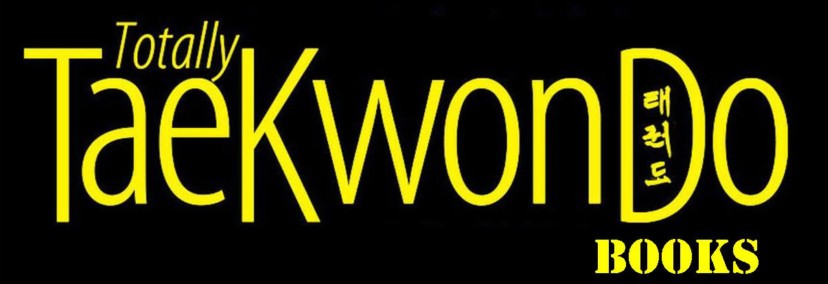
Totally Tae Kwon Do The Global Tae Kwon Do Magazine |

Category: ITF/Ch'ang Hon Pattern Performance |
The Encyclopedia Of Taekwon-Do Patterns: The Complete Patterns Resource For Ch’ang Hon, ITF & GTF Students Of Taekwon-Do - Vols 1, 2 & 3 The Encyclopedia Of Taekwon-Do Patterns is a unique series of books that feature the complete works of General Choi, Hong Hi; Creator of the Ch’ang Hon system of Taekwon-Do and founder of the International Taekwon-Do Federation; as well as the patterns further devised by some of his most talented and legendary pioneers; Grandmaster Park, Jung Tae and Grandmaster Kim, Bok Man. This 3 volume set is the only series of books in the world to feature all of the 25 patterns created by General Choi and his Taekwon-Do pioneers (including both Juche and Ko-Dang), as well as all 3 Saju exercises, the 6 Global Taekwon-Do Federation patterns developed by Grandmaster Park, Jung Tae and the Silla Knife Pattern instituted by Grandmaster Kim, Bok Man. Utilizing over 5,800 photographs the student is shown in precise detail, each and every pattern from beginning to end, including useful tips on their performance and things unique to particular organisations (such as Kihap points etc.). Displayed in full step by step photographic detail, which displays not just the final move but the ’in-between’ motions as well making each book ideal to learn or revise your patterns, no matter which organisation you belong to. Volume 1 takes the student of Taekwon-Do on his or her journey from 10th Kup White Belt through to 1st Degree Black Belt and also includes the first of the Black Belt patterns. Volume 2 takes the student of Taekwon-Do from Po-Eun (1st Dan) to Yoo-Sin (3rd Dan) and includes both Ko-Dang and Juche as well as the Dan grade patterns required by the Global Taekwon-Do Federation (GTF). Volume 3 takes the senior student of Taekwon-Do from Choi-Yong (3rd Dan) to Tong-Il (6th Dan) and includes both Pyong-Hwa and Sun-Duk (required by the GTF), as well as featuring the first weapon form of Taekwon-Do: The Silla Knife Pattern. |
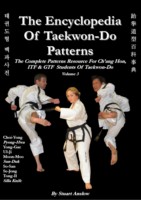
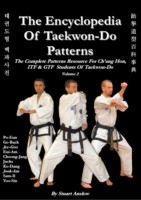
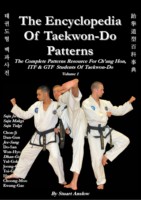
Books on how to 'perform' ITF, Ch'ang Hon or ITF-Style Patterns (Hyung, Tul, Forms) |
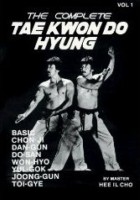
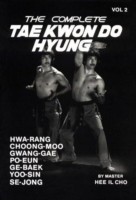
The Complete Tae Kwon Do Hyung Vols 1, 2 & 3 Grandmaster Hee Il Cho presents a three-volume series containing the original 20
traditional recognised forms, as well as the philosophy behind each. Volume 1 covers: Basic, Chonji, Dan-gun, Do-san, Won-hyo, Yul-gok, Joong-gun and Toi-gye.
Volume 2 covers: Hwa-rang, Choong-moo, Gwang-gae, Po-eun, Ge-baek, Yoo-sin and Se-jong. Volume 3 covers: Ul-gi, Sam-il, Choi-young, Ko-dang, Choong-jang and Tong-il. All volumes
are fully illustrated. |
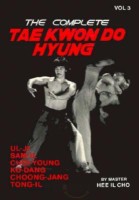
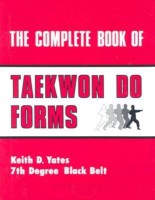
The Complete Book Of Taekwon Do Forms Keith Yates's invaluable taekwon do reference has been a standard for dojangs for decades. This text features the basics of training plus, of course, all the Chang Hon patterns up to Kae Bek in step-by-step photos. It also includes Basai and Chulgi, forms used by many Americanized Taekwon Do schools. |
Chon-Ji Of Tae Kwon Do Hyung This text is presented in Spanish & English. The chon-ji form is directed toward the beginning taekwondo white belt. In this text, applications are included with foot patterns, overhead views, and one-step sparring. |
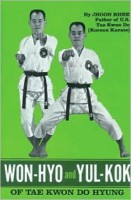
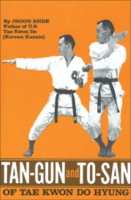
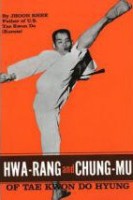
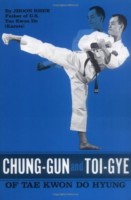
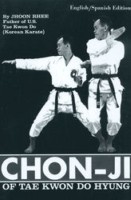
Tan-Gun and To-San Of Tae Kwon Do Hyung This fully illustrated volume addresses these two taekwondo forms, along with combinations, attack techniques, and basic street-defense moves for the beginner. Won-Hyo and Yul-Kok Of Tae Kwon Do Hyung Directed toward green belt, this fully-illustrated volume features a special at-a-glance pictorial presentation of each of these taekwondo forms with step-by-step views, foot patterns and overhead photographs. 160 pgs. |
Hwa-Rang and Chung-Moo Of Tae Kwon Do Hyung Directed toward brown belt, this volume explains the forms required to be promoted to black belt. A special page on Korean counting is included. Rhee is the "Father of American Taekwondo." Fully illustrated. |
Page 1 of 2 |
Amazon US links at top Amazon UK links at bottom of page |

Pattern Workout Book Full text of all 24 ITF patterns plus pattern histories, information and a few pictures too. 54 pages on gloss art paper. An essential training companion – easy to carry to training and keep as a handy reference. This is text from the latest (and final) version of the Condensed Encyclopaedia by General Choi Hong Hi. Note: This books is only available directly here: http://paulmtkd.co.nz/product-category/books |
chose to name the patterns after famous historical figures or events from Korean
history, the patterns that hundreds of thousands of Taekwon-Do students now practice!
However, with the name of each pattern, General Choi only left the
smallest snippet of information on those people or events, which for years, has
left many students wanting to know more. This book aims to fulfil that 'want'
and provides a much deeper insight and background into the lives of the illustrious
figures (or events) that so inspired General Choi. In this book you will learn more that you ever knew about these great figures in Korean history and understand what lead to them being chosen as a name for one of General Choi's patterns, but more importantly, their great contributions to Korea and its history, just as General Choi wanted! In General Choi's own words "A part of Korea therefore now exists across the whole world and Korea's nationality and history can never be removed by oppressors again". Apart from expanding on the histories behind each of the Ch'ang Hon (ITF) patterns, this book corrects some small errors and reveals some interesting titbits and revelations along the way. |
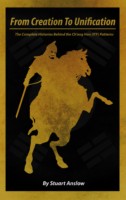
From Creation To Unification The Complete Histories Behind The Ch'ang Hon (ITF) Patterns Please note that although this isn't a 'patterns performance' book, it is on this page for students and instructors wanting in-depth information on the 'Definitions' behind the ITF / Ch'ang Hon Patterns, as this is the likely place to look. Through the patterns of Ch'ang Hon (ITF) Taekwon-Do, thousands of students around the world have learned more about Korea and its history than by any other resource, due in no uncertain terms to the fact that General Choi |
Chung-Gun and Toi-Gye Of Tae Kwon Do Hyung Directed toward blue belt, this volume explains the forms required to be promoted to brown belt. An at-a-glance section with the movements in both hyung is included. Fully illustrated. |
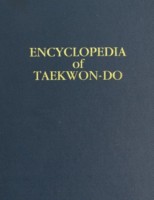
Volume 16 (Encyclopedia of Taekwon-Do): Supplemental Volume to the Encyclopedia of Taekwon-Do Adding to General Choi Hong Hi's masterpiece, the Encyclopedia of Taekwon-Do, this supplemental volume seamlessly integrates into his 15 Volume set. Volume 16 adds more than 620 photos to the approximately 30,000 of General Choi's Encyclopedia plus an additional 403 pages, 494 diagrams and 55,800+ words - all extensively researched, documented and primarily based on General Choi's other books. "I appreciate Mr. Campbell’s efforts and I am certain that this Volume 16 will be a great addition to everyone's library." – Dr. George Vitale, Ph.D. (VIII Degree), the first (and to date only) American to earn an academic Ph.D. (in Taekwon-Do) from a North Korean university. Ko-Dang and U-Nam, two patterns connected by fate and politics, are invaluable parts of Taekwon-Do’s history. While neither pattern was discarded entirely, both are complete patterns once considered part of the syllabus. Over time, the namesakes of Ko-Dang and U-Nam failed to continue to inspire a positive patriotic image for all Koreans as each presents acute political discomfort for one side of the Korean Peninsula; Ko-Dang for the North and U-Nam for the South. However, as Taekwon-Do’s patterns are the core of the art, both patterns deserve inclusion in General Choi's Encyclopedia of Taekwon-Do in order to document the whole of the art equally. In addition to Ko-Dang and U-Nam, Volume 16 also includes a new set of text descriptions for all of Taekwon-Do's patterns. The Condensed Patterns humbly continue the tradition in General Choi’s books of improving the detail and clarity of the pattern descriptions while leaving the patterns themselves unchanged. From 1959’s “Same as movement #6 from Pyung Ahn 4 [Sa Dan]”, 1965’s “L.B. stance” through to the Encyclopedia’s presentation many improvements have been made over time. The Condensed Patterns continue this evolution by presenting all of the available text-based and footwork information offered in the Encyclopedia, the Condensed Patterns describe each pattern count in a brief and easy to consume format. |